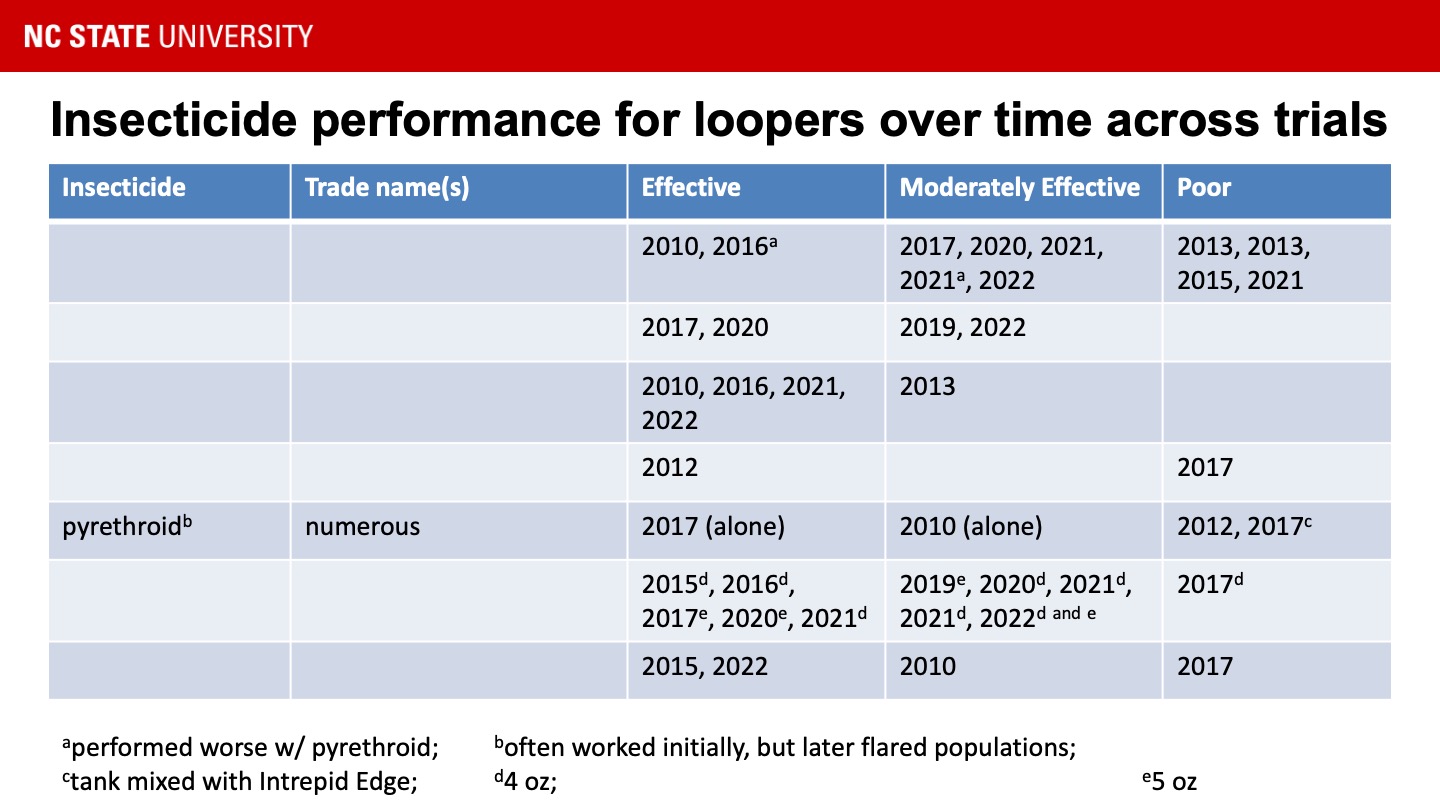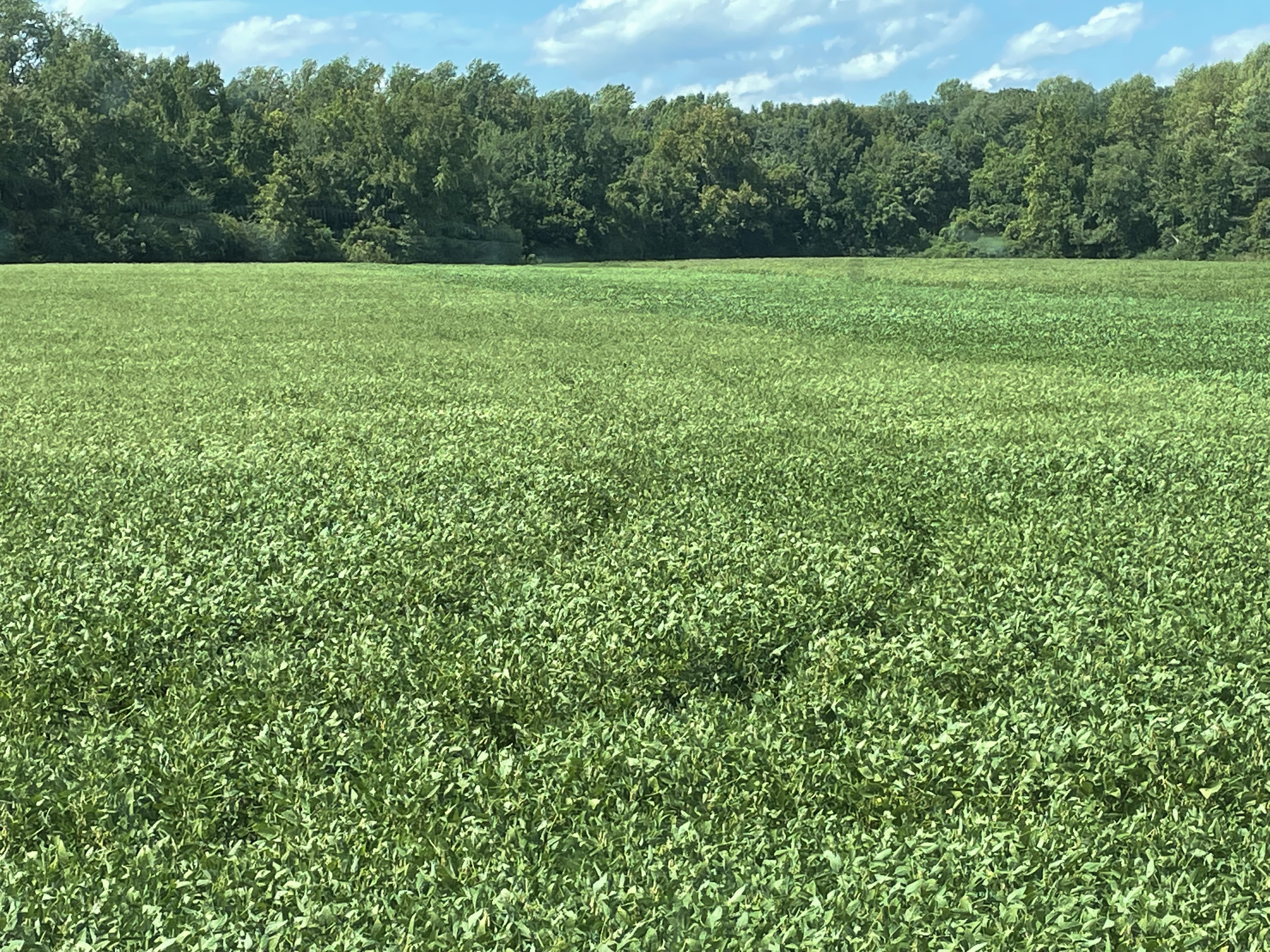Why Soybean Loopers Are Frustrating to Control and What We Are Doing About It
go.ncsu.edu/readext?915547
en Español / em Português
El inglés es el idioma de control de esta página. En la medida en que haya algún conflicto entre la traducción al inglés y la traducción, el inglés prevalece.
Al hacer clic en el enlace de traducción se activa un servicio de traducción gratuito para convertir la página al español. Al igual que con cualquier traducción por Internet, la conversión no es sensible al contexto y puede que no traduzca el texto en su significado original. NC State Extension no garantiza la exactitud del texto traducido. Por favor, tenga en cuenta que algunas aplicaciones y/o servicios pueden no funcionar como se espera cuando se traducen.
Português
Inglês é o idioma de controle desta página. Na medida que haja algum conflito entre o texto original em Inglês e a tradução, o Inglês prevalece.
Ao clicar no link de tradução, um serviço gratuito de tradução será ativado para converter a página para o Português. Como em qualquer tradução pela internet, a conversão não é sensivel ao contexto e pode não ocorrer a tradução para o significado orginal. O serviço de Extensão da Carolina do Norte (NC State Extension) não garante a exatidão do texto traduzido. Por favor, observe que algumas funções ou serviços podem não funcionar como esperado após a tradução.
English
English is the controlling language of this page. To the extent there is any conflict between the English text and the translation, English controls.
Clicking on the translation link activates a free translation service to convert the page to Spanish. As with any Internet translation, the conversion is not context-sensitive and may not translate the text to its original meaning. NC State Extension does not guarantee the accuracy of the translated text. Please note that some applications and/or services may not function as expected when translated.
Collapse ▲Soybean loopers are usually among the top three insect pests in North Carolina in terms of cost and control. In 2021, we estimated costs and losses from this pest at nearly $5.3 million, but I expect that to be up in 2022 due to extended problems north of the Albemarle Sound. Many fields experienced high looper numbers in this area and, in some cases, caused extensive defoliation like this photo that was texted to me.
Soybean loopers can be difficult to control for a number of reasons that I will detail in this article. I’ll end with what our program is doing to address loopers.
1. Soybean loopers tend to show up later in the season. A lot of the “soybean loopers” we see earlier season are probably the much less damaging cabbage looper (a related, but different species), while those that we see later season are probably true soybean looper. We can find a few of them here and there throughout the season, but our big flush in North Carolina tends to come in the last week of August and first week of September. Some years they persist, but populations often crash as we move into the later parts of September. They are difficult to manage late-season for a number of reasons. Many fields are approaching maturity, can have a thick canopy, and the larvae are often large before they are noticed.
2. Soybean loopers feed from the bottom of the canopy toward the top. This means that bottom defoliation can be missed if folks aren’t scouting carefully. Penetrating the top of the canopy with insecticides to reach the bottom can be challenging under the best circumstances and many looper applications go out by air with volumes that are on the lower side.
3. Our threshold is based on defoliation. One thing I like about our defoliation thresholds is that they are very conservative. In fact they are so conservative that, in the vast majority of cases, they will trigger an insecticide application before any yield loss has been experienced. This allows time for biology to get working on the loopers, whose populations can crash from parasites, predators, and viruses. I’ve been sending populations of North Carolina soybean loopers to a cooperator for years and he comments how most of the larvae I send die from parasitism. North Carolina stands out in that populations from other locations just do not have the parasite load we seem to support here.
One thing I do not like about our defoliation thresholds is that they allow larvae to feed and gain size. Defoliating caterpillars like loopers do most of their defoliation during the last few days before they pupate. By waiting for them to defoliate and hit threshold, we also let them gain size. Larger larvae are tougher to kill than smaller larvae with insecticides.
4. They are resistant to many broad spectrum insecticides. Soybean loopers seem to be one of these pest species that is especially good at becoming resistant. We rely heavily on pyrethroids in soybean to manage pests like kudzu bug, bean leaf beetle, and stink bugs. With the exception of kudzu bugs, most of these insecticides go out mid- and late-season. An all too common practice is to throw a pyrethroid in the tank either at R3 or R5. We have good information that this kills beneficial insects and, because loopers are resistant to pyrethroids, this can flare their numbers. I’ve written more about this before.
5. Their insecticide susceptibility seems to vary. As I mentioned earlier, loopers tend to show up late in the season. This is because they are a migratory insect. They don’t have a mechanism to overwinter where it freezes, so the populations we receive from year-to-year developed somewhere south of here. We don’t understand enough about their biology to predict where these populations come from and I suspect this has something to do with their insecticide susceptibility. I would wager that they are continuously exposed to a variety of insecticides in more sub-tropical and tropical locations on various hosts. When they move up to North Carolina, they carry this signature of insecticide and susceptibility with them.
I’ve provided a table of several insecticides I’ve tested over the years and ranked them into effective, moderately effective, and poor depending on how they performed in a given trial. Names have been removed to protect the innocent with the exception of pyrethroid. Note how there isn’t a single insecticide that I can say is effective 100% of the time. Some are more consistent than others and some I have more experience with. This makes creating a recommendation very difficult.
What we are doing about it. My program teamed up with Dr. Nick Miller on a pilot project to see if we could genetically differentiate soybean looper populations across the southeastern US and Caribbean. Similar to other migratory moth populations, we found that these populations were genetically indistinguishable given the methods we were using. That means that soybean looper populations do a lot of mixing across a wide-geography. However, corn earworm (bollworm) is another pest moth species that migrates and has a genetically similar population across a wide-geography. Despite this, the matrix of crops in a very small radius (less than a mile) can predict how resistant corn earworm is to Bt. This supports my supposition earlier that soybean loopers could be selected at the local level and carry this signature of insecticide and susceptibility with them when they move up to North Carolina. More research should be done into this topic to give us more predictability.
On the more practical level, the NC Soybean Producers Association has funded a project for us to re-evaluate defoliation thresholds. Most of the past work has focused on full-season beans without much stress. Many of our soybean looper defoliation issues are on double-cropped beans without much canopy and potential stress. We hope that these studies provide more up-to-date and relevant information to better manage soybean looper defoliation.
The last thing I want to share is a second photo that was texted to me. In the foreground you can see soybeans that were treated for soybean looper and in the background you can see soybeans that were not. The consultant told me that both the treated and untreated areas yielded the same. It’s a good reminder that soybeans can tolerate a lot of defoliation and our already conservative thresholds are good-to-go.





